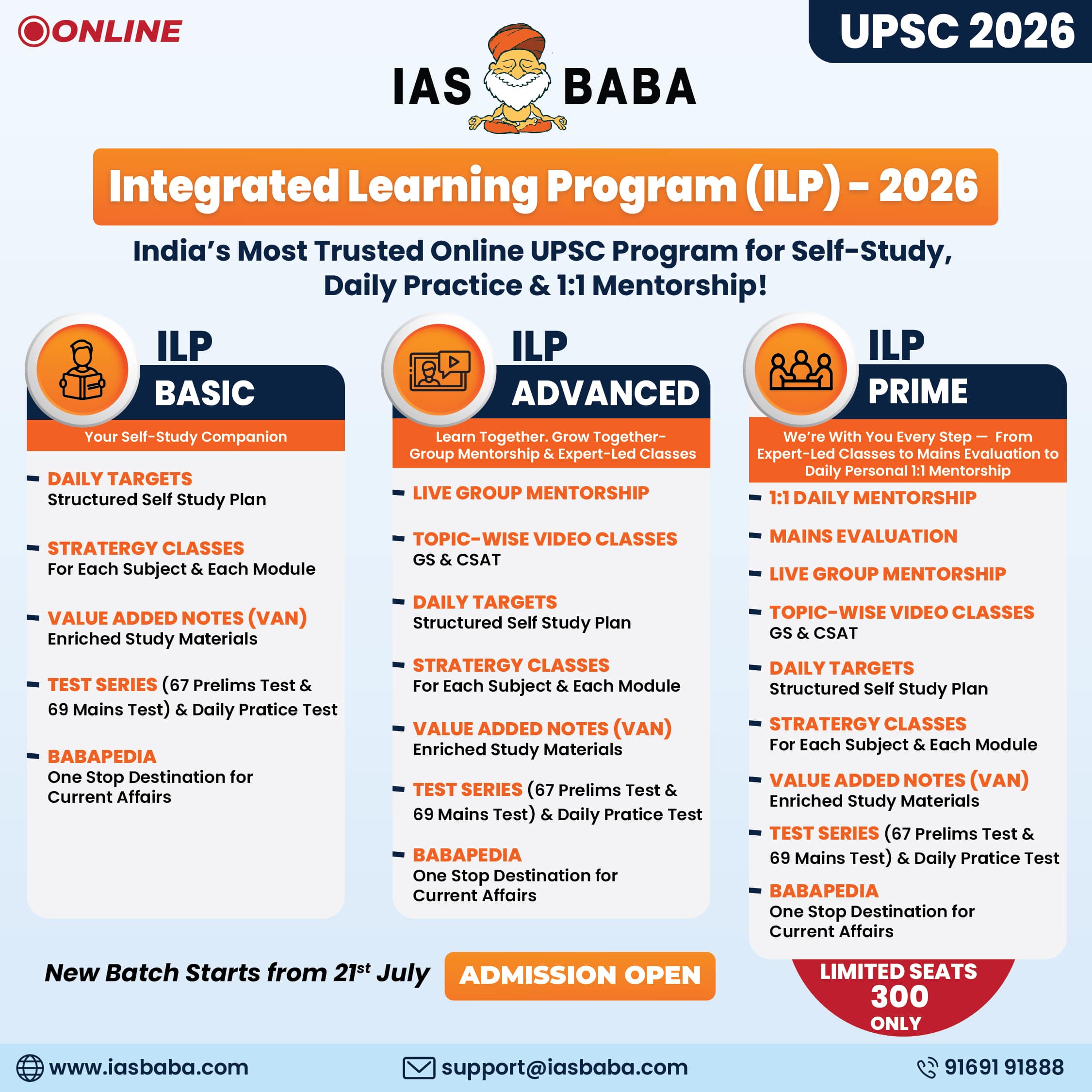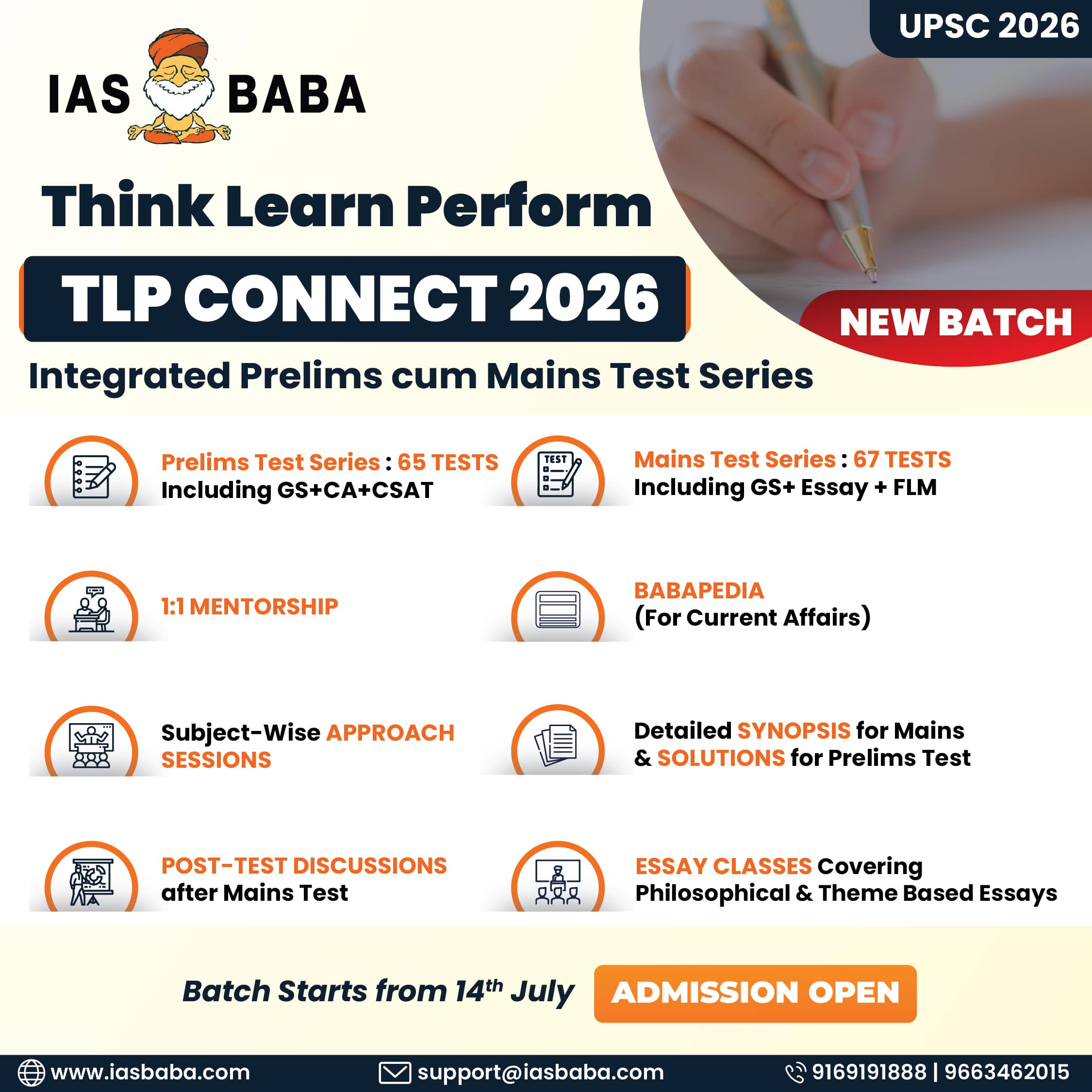IASbaba's Daily Current Affairs Analysis
IASbaba’s Daily Current Affairs (Prelims + Mains
Focus)- 13th July 2018
Archives
(PRELIMS+MAINS FOCUS)
Ancient rock carving of Buddha: Swat Valley, Pakistan
Part of: GS Prelims – Art and Culture; Place in news
In news:
- An ancient rock carving of the Buddha that was blown up by the Taliban as militants overran Pakistan’s Swat valley a decade ago has been restored after an international effort.
- The carving was half destroyed when the Tehreek-e-Taliban Pakistan swept into Swat in 2007, imposing its brutal Islamist rule.
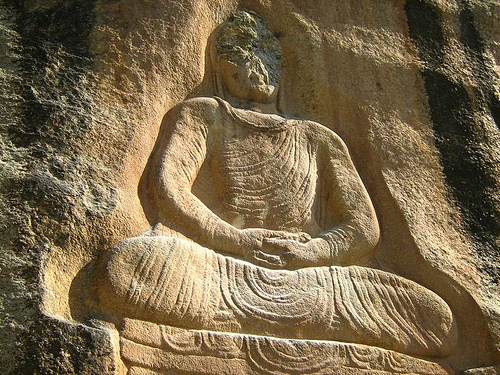
Pic: https://deeshaasite.files.wordpress.com/2007/11/buddha_image1.jpg
(Swat valley Buddha that was blown up by the Taliban militants)
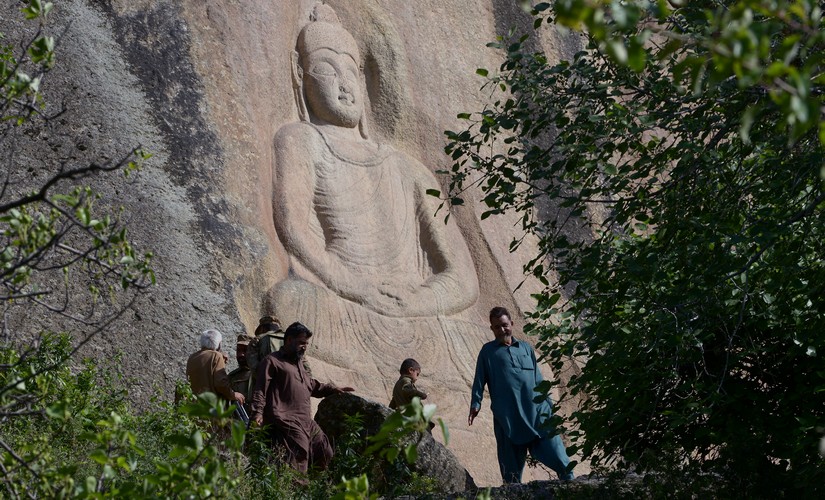
This photo taken on April 26, 2018 shows Pakistani visitors walking past the seventh-century rock sculpture of a seated Buddha carved into a mountain in Jahanabad town in the northwestern Swat Valley of Pakistan, following a restoration process conducted by Italian archaeologists after the Taliban defaced it in 2007.
The Buddha of Swat, carved on a cliff in the seventh century, was dynamited by the Pakistani Taliban in 2007. Now it has been restored, a powerful symbol of tolerance in the traumatised Pakistani valley. / AFP PHOTO / ABDUL MAJEED / TO GO WITH Pakistan-archaeology-Buddha-Swat,FEATURE by Amelie Herenstein
Pic: https://images.firstpost.com/wp-content/uploads/2018/07/Buddha-in-Pakistans-Swat_AFP.jpg
(Picture of restored Buddha)
Key pointers:
- 7th-century Buddha of Swat valley, Pakistan
- Seated serenely in the lotus position (meditative posture)
- considered one of the largest rock sculptures in South Asia
- foothills of the Himalayas
- Italian government helped to preserve the cultural heritage and restore the six-metre-tall Buddha of Swat
- Swat, a picturesque valley in the Khyber Pakhtunkhwa Province of Pakistan
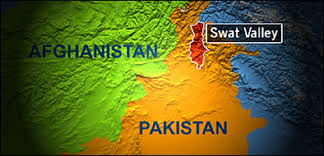
Food safety @Temples
Part of: GS prelims – Health and social issue
In news:
- Now, temple prasadam to get validation of their safety and quality in the form of certification by the Food Safety and Standards Authority of India (FSSAI)
- Temples will be soon selling prasadam in food grade containers that will have ‘best before’ dates.
- There would also be regular inspections from the Food Safety Department (FSD) to ensure quality and quantity in the prasadam being sold.
Fast recap:
- Operation Sagar Rani – Formalin, an unsafe chemical is being used by fishermen in Kerala as well as in TN for preserving the fish harvests for longer. FSSAI has been running tests under Operation Sagar Rani to ensure that the fishes being sold in the market are safe for consumption.
- ‘The Eat Right Movement’ – FSSAI unveiled ‘The Eat Right Movement’, built on two broad pillars of ‘Eat Healthy’ and ‘Eat Safe’. Its aim is to cut down salt/sugar and oil consumption by 30% in three years.
- The draft Food Safety and Standards (Labeling and Display) Regulations 2018 made labelling of salt mandatory, introduced a special red labelling for high in fat, sugar or salt (HFSS), introduced front of pack labelling among others.
- Project Dhoop – Launched by Food Safety and Standards Authority of India (FSSAI) to spread awareness about availing Vitamin D through natural sunlight and consuming fortified food among school-going children
Tadipatri steel factory gas leak
Part of: GS Mains III – Disaster; Risk management
In news:
- Six die and four fell seriously ill due to poisonous gas leak at steel plant in Andhra Pradesh’s Tadipatri
- Carbon monoxide gas leak caused the mishap at the steel plant in Andhra Pradesh.
- Gerdau Steel India Ltd factory – The plant’s owner Gerdau SA is based in Sao Paolo and is one of the largest steel manufacturers in the Americas.
(MAINS FOCUS)
SOCIAL/WELFARE
TOPIC: General Studies 2
- Government policies and interventions for development in various sectors and issues arising out of their design and implementation.
- Welfare schemes for vulnerable sections of the population by the Centre and States and the performance of these schemes; mechanisms, laws, institutions and bodies constituted for the protection and betterment of these vulnerable sections
- Issues relating to development and management of Social Sector/Services relating to Health, Education, Human Resources.
For ‘safe childhood’: Need for Moral Responsibility and Moral Accountability
Introduction:
- Twenty people have been killed by raging mobs, on the suspicion of being child-lifters, across the country in the last few weeks.
- The below article is excerpt of views by Nobel Peace Laureate Kailash Satyarthi, founder of Global March against Child Labour and Kailash Satyarthi Children’s Foundation.
Disappointing facts:
- Today, people live in an uncertain world, who suspects that their children could be abducted for prostitution, organ trade, forced beggary or any other form of slavery.
- Eight children go missing every hour in India to remain untraced and four are sexually abused. These figures are enough to cause fear among the masses.
- Children are not safe in homes, schools, neighbourhoods, workplaces, shelter homes, or even inside the places of worship and faith institutions. There are instances of children getting abused by a family member or friend.
- There is lack of trust in the state as it has failed many times to bring the perpetrators to justice.
Therefore, fears triggered by such insecurities quickly take the form of collective frustration. Mob action, condemnable no doubt, is the most violent expression of such frustration.
However, there is a need to develop a culture of moral responsibility. It is important that we don’t take the law into our hands and to follow the legal, judicial system for justice. But it is necessary to point to the apathy among our institutions toward child safety.
Failure of the State?
Mob action is the most violent expression of fears about the safety of our children; it shows a lack of trust in the state.
Reports on incidents like
- the sale of a baby by the Missionaries of Charity home;
- the rape of minor girls by a self-styled godman in Delhi; and
- the rape of a nine-year-old girl by a Maulana in a madrassa
These raises a basic question: Why are many of these residential religious institutions allowed to run without stringent regulations and checks?
- The government has information on 1.4 lakh missing children on one hand and on the other, has a database of three lakh children staying in state and NGO-run children’s homes. However, it has failed to effectively use simple technological solutions like facial recognition software and try to reunite missing children with their families.
- The world’s largest democracy has failed to pass more stringent laws against child trafficking and child pornography.
The missing links
- Many unfortunate incidents like those in Kathua, Unnao and Mandsaur attracted public outrage. However, none questioned why an eight-year-old was grazing horses and not attending school as per constitutional right to education.
- Or how a school in Mandsaur could have been so unsafe for a little girl. Or why a political party not just tolerates but protects alleged rapists for so long.
- Demanding capital punishment for the perpetrators of child rape is the easiest way to show social media heroism.
- However, there are very few incidents where an individual or institution ever took moral responsibility for such a pathetic situation on child safety.
- Therefore, the urgent need is – a culture of moral responsibility and accountability among our institutions, as opposed to the prevalent culture of superficial, convenient responses.
“Moral responsibility is an individual decision and moral accountability is a culture”.
Mahatma Gandhi called off the Non-Cooperation Movement against the British because some of his supporters turned violent in Chauri Chaura.
Martin Luther King Jr. repeatedly called for compassion and hope despite facing vicious racist insults.
More recently, Nelson Mandela adopted the approach of reconciliation to bring about justice, despite being a brutalised victim of apartheid.
“A culture of accountability can be created if the society and the state are guided by a moral compass”.
Connecting the dots:
- Numerous legislations regarding ‘Rights of children’ in India have failed to tap the real essence of ‘Right to have a Childhood’. In the light of the statement critically discuss how effective the Indian legislations have been in securing the ‘Rights of children’?
SOCIAL/NATIONAL
TOPIC: General Studies 2
- Government policies and interventions for development in various sectors and issues arising out of their design and implementation.
- Welfare schemes for vulnerable sections of the population by the Centre and States and the performance of these schemes; mechanisms, laws, institutions and bodies constituted for the protection and betterment of these vulnerable sections
- Issues relating to development and management of Social Sector/Services relating to Health, Education, Human Resources.
Flawed Institutions of Eminence List?
About:
We recently read that 6 higher education institutions have been named Institutions of Eminence (IoE) by the Centre.
- Indian Institute of Science (IISc), Bengaluru
- Indian Institutes of Technology, Mumbai
- IIT, Delhi
- Jio Institute of the Reliance Foundation
- Manipal Academy of Higher Education
- BITS, Pilani
(Last three are private institutions)
Advantage IoE
Education institutions which are in government’s list of ‘Institutes of Eminence’ (IoEs) will have greater autonomy compared to other higher education institutions.
- They can be free from the clutches of the overarching regulatory regime of bodies such as University Grants Commission (UGC), AICTE, and Medical Council of India (MCI).
- More autonomy in designing syllabi and deciding fee structure. Teachers would also be allowed to take up consultancy work among others.
- Public institutions will get financial support from the human resource development ministry.
- The private institutions under the project will enjoy two key freedoms: one, they can offer as much salary as they want to their teaching staff; and two, the course fee can be completely market linked. The government institutions, however, will have to follow the UGC scale of pay for permanent employees. For contractual staff including professors on contract, they too can pay as much as they wish.
- If a new institutions fails to make enough progress in the first 18 to 20 months, then the government will cancel its candidature. And the disqualified institution will be replaced from a reserve list of institutions.
Failing role of regulators
It is the responsibility of Regulators to ensure that we have a socially desirable outcome but in the case of higher education in India, the opposite seems to have happened.
The University Grants Commission (UGC) has, over more than half a century, micromanaged this space, leading to a large number of publicly funded universities, producing low-level ‘knowledge’, which have shattered the aspirations of our youth.
Successive governments have tried to revamp the regulatory environment for higher education. The latest offering is in the form of a proposed Higher Education Commission of India (HECI), replacing UGC.
The main intention is to leave the HECI to focus on quality while leaving funding of public institutions to the Ministry of Human Resource Development (MHRD).
Concerns:
- The above arrangement has raised concerns about the possibility of biasness that the government may use its discretion to reward institutions according to its ideological predilections.
- Even though the issue was ever-present hazard in a democracy but the recent move whereby an elected government exercises it’s right to allocate funds has raised more concerns.
One can only pressure it to be impartial and accountable in its actions.
The way ahead:
Even though ‘excellence’ is difficult to measure, it is not difficult to identify.
“In the world of ideas, excellence lies in the ability to participate as an equal in the global knowledge commons”.
- The emphasis here must be on engagement; it is not necessary that institutions should produce knowledge in every field or that its members abide by every idea and protocol in the fields chosen. Whether the criterion of equal engagement is met by the majority of our universities is a moot question.
- We should wait and see whether HECI is going to be more than just old wine in a new bottle.
Flawed IoE list?
The government’s IoE list already suffers from a serious lack of credibility, as the most obvious question that arises is: Where are the universities?
- The IoE list has totally disregarded universities which embodies knowledge across a wide range of disciplines.
- The emphasis should be on depth of knowledge across a broad horizon, rather than dominated by engineering schools.
These engineering schools, notably the IITs, have done us proud but cannot be equated with the great universities of the world for the simple reason that they are focussed on a narrow domain.
- The IISc’s scope is of course broader than that of the IITs but it does not embrace the social sciences and the humanities, the presence of which would be considered necessary for an institution to be considered a university.
- While BITS Pilani made significant contribution to the country at a time when it desperately needed engineers, it still doesn’t have the breadth of disciplines to be considered a university.
However, the presence of the two other institutions on the list leaves one confused and surprised.
- One of them has been conferred the status solely on grounds of greenfield category institutions.
- The other is known largely for its practice of charging capitation fees. Eminence is not usually understood in terms of money.
Conclusion:
Even before the HECI is a reality, we can get an overview of what to expect when such a limited approach to education guides the hand of the state.
While there may be no political partisanship involved in the matter of finding eminence only in engineering schools, the choices do reflect short-sightedness when the social sciences and the humanities are completely ignored.
Connecting the dots:
- Can the newly proposed Higher education Commission of India (HECI) is going to be more than just old wine in a new bottle. Examine.
- Critically analyze the role of University Grant Commission in light of higher education in India.
(TEST YOUR KNOWLEDGE)
Model questions: (You can now post your answers in comment section)
Q.1) Which of the following are greenhouse gases?
- Methane
- Chlorofluorocarbons
- Carbon dioxide
- Ammonia
- Carbon monoxide
Select the correct codes:
- 1, 2, 3 only
- 1 and 2 only
- 1, 2, 3 and 5
- 1, 2, 3, 4 and 5
Q.2) Carbon monoxide is a poisonous gas. Which of the following statements regarding CO are correct?
- It is produced by incomplete combustion of fuel.
- When inhaled, it combines with hemoglobin to form carboxyhemoglobin.
- Exposure to CO causes chest pain and irritation; however, it is never fatal.
Select the code from following:
- 1 and 2
- 2 and 3
- 1 and 3
- All of the above
Q.3) The author of Buddhacharita was
- Nagarjuna
- Vasumitra
- Nagasena
- Asvagosha
Q.4) 7th-century Buddha seated serenely in the lotus position (meditative posture) was recently in news. It is found in –
- Khyber Pakhtunkhwa Province, Afghanistan
- Swat Valley, Pakistan
- Lushan province , China
- Khatakan Taung, Myanmar
Q.5) ‘Project Dhoop’ is launched by
- NITI Aayog
- Ministry of New and Renewable Energy
- Ministry of Environment, Forest and Climate Change
- Food Safety and Standards Authority of India (FSSAI)
Q.6) Consider the following statements with respect to Food Safety and Standards Authority of India (FSSAI)
- It is established under the Food Safety and Standards Act, 2006
- Ministry of Consumer Affairs, Food and Public Distribution is administrative ministry for the implementation of FSSAI
- ‘Operation Sagar Rani’ is launched by FSSAI
Select the correct statements
- 1 Only
- 1 and 2
- 1 and 3
- 1, 2 and 3
MUST READ
Moon shine: on India-South Korea ties
Section 377 and beyond
Is planting saplings a solution to the felling of trees?
The uniform code
Spirit Of Sendai
Hollowing out a promise
The unshackling





